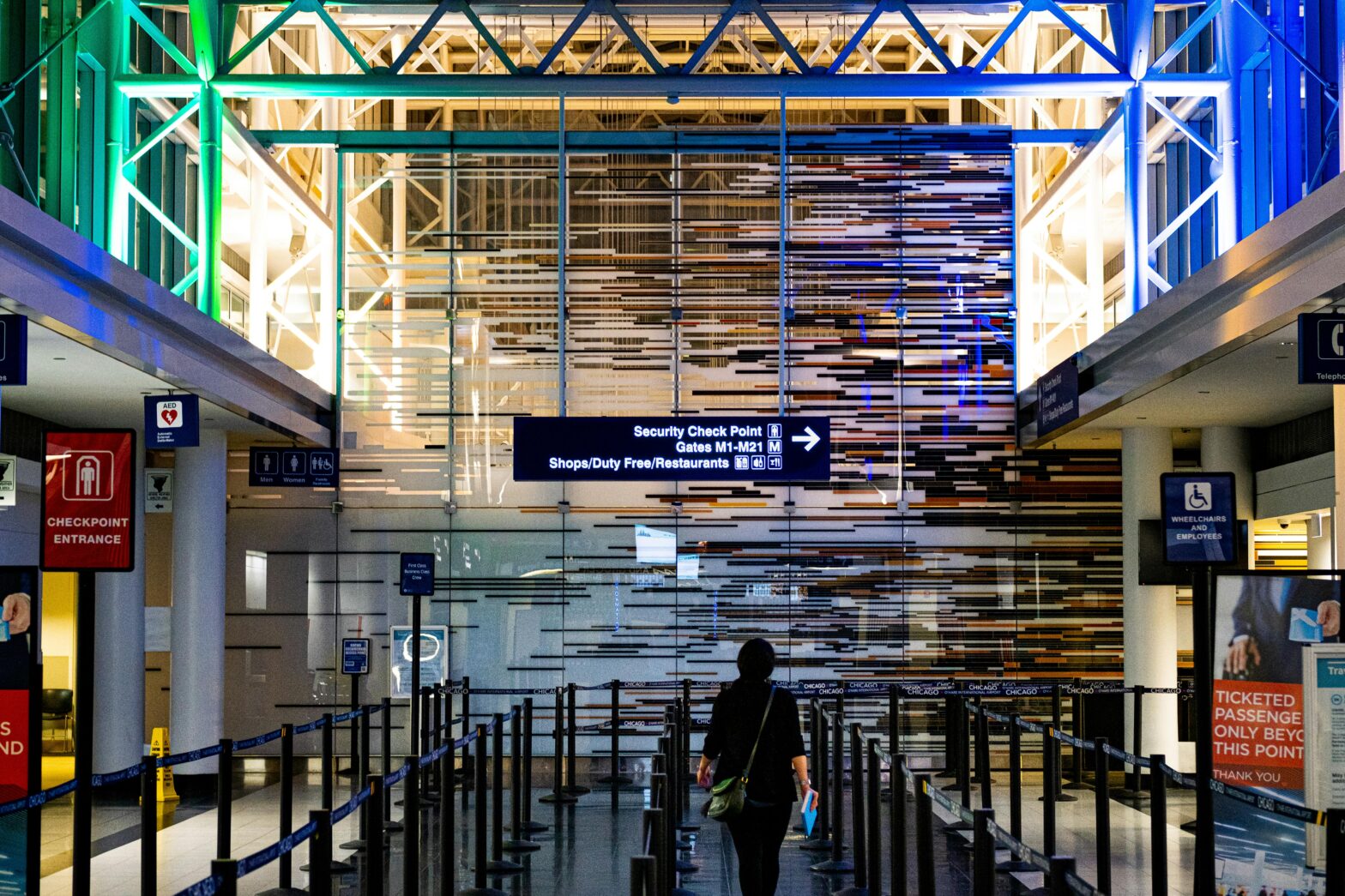The Transportation Security Administration (TSA) rolled out a new feature at a West Coast airport earlier this month: self-checkout. TSA’s Innovation Checkpoint, a self-screening system, was unveiled at Harry Reid International Airport in Las Vegas and is the first of its kind in the United States.
Often nicknamed TSA’s self-checkout lane, the system is a prototype designed to help travelers screen in a “near self-sufficient” manner through security.
How TSA’s Innovation Checkpoint Works
According to a press release on the TSA’s website, Innovation Checkpoints will have the “same rigorous screening standards and rules” that passengers traveling through TSA Pre-Check lanes experience, like keeping shoes on, not removing jackets, and a generally quicker process.
Passengers enter a machine with glass on either side and can only move forward once their body scan is passed. TSA officers will monitor the self-checkout lanes remotely unless in-person support or intervention is needed. One interesting feature is the system will allow passengers to resolve “alarms” on their own. This will reduce the need for officer pat downs or other screening procedures.
The Innovation Checkpoint processes bags through another machine. If the bag clears, it will come straight out to the traveler. If not, it will route to a TSA agent for a standard manual screening.
ABC News tested out the new system and it picked up the anchor’s microphone while going through the body scan. He had to exit, remove the microphone, and try again.
Safety and Speed Concerns
Passenger experiences in TSA lines are notoriously eye-roll-worthy, often inducing a headache at just the thought of the experience. One traveler forgets about the water bottle in their purse while another isn’t familiar with the “no aerosols” rule. Someone else is pleading to bring their oversized perfume, and another person has a strange, unregistered pet with them.
There’s also the subject of firearms. Though it happens much less often than too-large liquids and random “no fly” items, TSA agents routinely stop firearms from getting through the security process.
One legitimate concern is that the same hangups, or safety concerns, will happen in self-checkout lanes. As a result, worries about a longer security process that may potentially be less secure are top of mind for some.
Technology typically lacks feeling or the ability to reason. Live TSA agents can miss items, like oversized perfume, but they have the potential to assess a situation differently than technology would.
For example, a person who shows signs of unusual stress or anxiety might prompt live agents to assert an additional security measure. A machine, however, might not pick up the same concerns.
However, technology is less prone to error than humans. Thus, there’s a chance that fewer potentially dangerous items can proceed through security.
TSA agents will be nearby, observing the flow of security and stepping in when necessary. Currently, no plans have been announced regarding expanding the concept while the TSA collects data and feedback about the system.
The technology is interesting and feels futuristic, but whether it will help passengers process more quickly remains to be seen.
